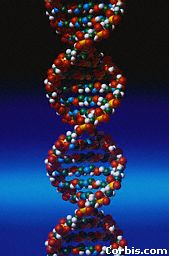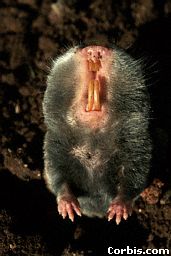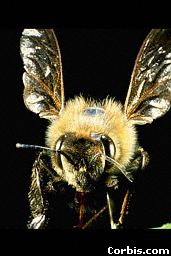PART 4: GENES, ALTRUISM, AND EVOLUTION
|
|||
|
Section 1: Altruism and Genes |
|||
| In the previous section I noted that the “urge to love,” when we consider it in a personal sense, is likely to originate in specific areas of the brain which are concerned with interpersonal relations. As we saw in Part 1 , this urgemay be influenced by chemicals. In this part, I explore the question: Why do we behave well towards others in an evolutionary sense. | |||
| A good “system” for the investigation of evolutionary reason for the “urge to love” is the phenomenon of altruism that has been extensively studied by scientists. Darwinian concept of survival of the fittest, i.e. organisms best adapted to their environment and able to leave the largest number of offsprings, is undoubtedly the core stone of modern evolutionary theory.However, animals often behave in ways that seems to endanger the individual and decrease its chance of surviving and passing on its genes in reproduction. There is a significant amount of fascinating behavioral studies done in altruistic behavior of animals. A working definition of altruism can be: | |||
|
|||
|
Gray Squirrel |
Mole Rat |
||
| Examples of altruistic behaviors are vast and well studied. Certain birds have been observed to throw themselves in front of the predator as to protect their young or even to sacrifice themselves for the entire flock. Even in colonies of Belding ground squirrels, certain organisms sacrificed their lives just to warn the rest that danger is nearing. Naked mole rats do not reproduce but instead devote their lives to caring for offsprings of the queen. Similar behaviors have been observed in ants and honeybees. Worker honeybees give up reproduction to care for the offsprings of the queen and ants often sacrifice their lives to protect the nest. | |||
|
Chromosomes |
|||
| These types of behaviors pose “the problem of altruism.” It has been proposed that organisms that are predisposed to altruistic behaviors are likely to have an “altruistic gene” or some combination of genes that interact to produce brain systems giving rise to such a behavior. According to Darwinian concepts of natural selection, it makes sense that the individuals who are altruistic would eventually be “selected against” since they would die off without the propagation of their genetic material. So how do we explain the fact that this is not the case? Could it be that altruism is in fact, selfish? | |||
| It is entirely possible that natural selection can also operate on the level of a gene. For instance, one way that genes can be preserved by an individual organism performing an innate behavior (behavior that has an underlying genetic component) is by enhancing the survival of other copies of itself. By throwing itself at the predator, a bird is sacrificing its life but the lives of the entire flock are saved. That is a hell lot of genes! So in that sense, the “altruistic gene” has been said to be a selfish gene. Richard Dawkins wrote an entire book called the Selfish Gene (its quite engaging reading and I would highly recommend it). | |||
| Another concept which explains altruistic behaviors through selfish motives is that of kin selection . From a statistic viewpoint, individuals who are closely related are most likely to carry the same genes. An organism that helps promote survival of these genes through inherited behaviors of its close relatives is actually maximizing the survival of greater number of its own genes (remember the bird sacrificing itself… the flock along with all those genes can fly away!). | |||
| Lets take the example I used earlier in discussion of honeybees. It turns out that male honeybees have one copy of each of their genes (are haploid). Female honeybees, on the other hand, have two copies of their genes (are diploid) and on average share about 75% of their sisters’ genes. If female workers would reproduce they would share only 50% of the genes of their offspring.So by Darwinian concepts it makes sense that the female workers are better of helping their mother raise more of their sisters since they share more genes with them then would an offspring. So in essence they are inherently being “selfish” even though outwardly they altruistically “give up” mating and reproduction. | |||
| So is it the case that human beings do seemingly altruistic things for selfish reasons? Is mother’s love selfish? If so, where is the selfishness rooted in? Is love selfish? Is our ability to experience love rooted in evolutionary history? | |||
| I will try to make sense of these questions in the Next Two Sections. | |||
| LINKS on ALTRUISM | |||
|
The Problem of Altruism Trivers' Reciprocal Altruism Objectivism In-Brief: Altruism THE EVOLUTION OF RECIPROCAL SHARING ORIGINS OF VIRTUE |
|||




